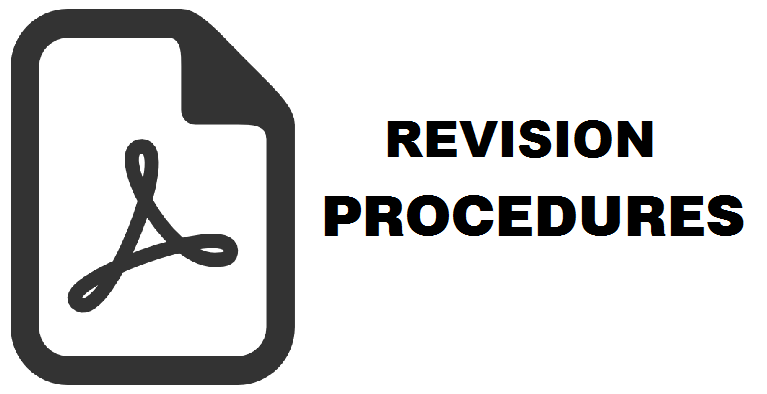Seismic Vulnerability of Semarang, Indonesia for Shallow Crustal Fault Earthquake
Windu Partono(1*), Masyhur Irsyam(2), Muhammad Asrurifak(3), Undayani Cita Sari(4), Victor Victor(5)
(1) Civil Engineering Department, Engineering Faculty, Diponegoro University, Semarang, Indonesia
(2) Civil Engineering Department, Faculty of Civil and Environmental Engineering, Bandung Institute of Technology, Bandung, Indonesia
(3) Faculty of Civil Engineering and Planning, Institut Sains dan Teknologi Nasional, Jakarta, Indonesia
(4) Civil Engineering Department, Engineering Faculty, Diponegoro University, Semarang, Indonesia
(5) Civil Engineering Department, Engineering Faculty, Diponegoro University, Semarang, Indonesia
(*) Corresponding Author
Abstract
Keywords
References
Abrahamson, N. A., & Silva, W. J. (2008). Summary of the Abrahamson & Silva NGA ground-motion relations. Earthquake Spectra, 24(1), 67-97.
Abrahamson, N., Silva, W., & Kamai, R. (2014). Update of the AS08 ground-motion prediction equations based on the NGA-West2 Data Set. PEER Report No. 2013/04, Pacific Earthquake Engineering Research Center, University of California, Berkeley, CA.
Boore, D. M., & Atkinson, G. M. (2008). Ground-motion prediction equations for the average horizontal component of PGA, PGV, and 5%-damped PSA at spectral periods between 0.01 s and 10.0 s. Earthquake Spectra, 24(1), 99-138.
Boore, D. M., Stewart, J. P., Seyhan, E., & Atkinson, G. M. (2014). NGA-West 2 equations for predicting PGA, PGV, and 5%-damped PSA for shallow crustal earthquakes. Earthquake Spectra, 30(3), 1057-1085.
Campbell, K. W., & Bozorgnia, Y. (2008). NGA ground motion model for the geometric mean horizontal component of PGA, PGV, PGD and 5% damped linear elastic response spectra for periods ranging from 0.01 to 10 s. Earthquake Spectra, 24(1), 139-171.
Campbell, K. W., & Bozorgnia, Y. (2014). NGA-West2 Campbell-Bozorgnia ground motion model for the horizontal components of PGA, PGV and 5%-damped elastic pseudo-acceleration response spectra for periods ranging from 0.01 to 10 sec. Pacific Earthquake Engineering Research Center, PEER Report 2013/6, pp. xii+75.
Chiou, B. S. J., & Youngs, R. R. (2008). NGA model for average horizontal component of peak ground motion and response spectra. PEER 2008/09, Pacific Engineering Research Center, College of Engineering, University of California, Berkeley.
Chiou, B. S. J., & Youngs, R. R. (2014). Update of the Chiou and Youngs NGA ground motion model for average horizontal component of peak ground motion and response spectra. PEER Report 2013/07, Pacific Earthquake Engineering Research Center Headquarters at the University of California, Berkeley.
Elnashai, A., Kim, S. J., Yun, G. J., & Sidharta, D. (2007). The Yogyakarta Earthquake of May 27, 2006. Mid-America Earthquake (MAE) Center Report, No 07-02.
Firmansyah, D. S., & Rohyan, J. (2019). The risk assessment of multi hazard area: A case of mitigation consider in spatial planning of Bukittinggi City. Indonesian Journal of Geography, 51(3).
Gregor, N. J., Addo, K. O., Abrahamson, N. A., & Youngs, R. R. (2012). Comparison of BC hydro subduction GMPE to data from recent large megathrust earthquakes. 15 WCEE, USBCA 2012.
Idriss, I. M. (2008). An NGA empirical model for estimating the horizontal spectral values generated by shallow crustal earthquakes. Earthquake Spectra, 24(1), 217-242.
Idriss, I. M. (2014). An NGA-West2 empirical model for estimating the horizontal spectral values generated by shallow crustal earthquakes. Earthquake Spectra, 30(3), 1155-1177.
Irsyam, M., Hutabarat, D., Asrurifak, M., Imran, I., Widiyantoro, S., Hendriyawan, Sadisun, I., Hutapea, B., Alamsyah, T., Pindratno, H., Firmanti, A., Ridwan, M., Harijono, S. W., & Pandhu, R. (2015). Development of seismic risk microzonation maps of Jakarta. In Geotechnics for catastrophic flooding events. CRS Press.
Maze, L. Z., Sugianto, N., & Refrozon. (2021). Seismic hazard microzonation of Bengkulu City, Indonesia. Geoenvironmental Disasters, 8, 5. https://doi.org/10.1186/s40677-021-00178-y.
National Center for Earthquake Studies (PuSGeN). (2017). Peta Sumber dan Bahaya Gempa Indonesia Tahun 2017/ Indonesian earthquake source and hazard map 2017. ISBN: 978-602-5489-01-3.
Partono, W., Wardani, S. P., Irsyam, M., & Maarif, S. (2016). Development of seismic microzonation maps of Semarang, Indonesia. Jurnal Teknologi, 77(11), 99-107.
Partono, W., Asrurifak, M., Tonnizam, E., Kistiani, F., Undayani Cita Sari, U. C., & Putra, K. C. A. (2021). Site soil classification interpretation based on standard penetration test and shear wave velocity data. J. Eng. Technol. Sci., 53(2).
Partono, W. (2023). Mikrozonasi Bahaya Gempa Kota Semarang / Earthquake microzoning hazards of Semarang. Undip Press. ISBN 978-623-417-231-7.
Pranata, B., & Triyono, R. (2021). Microzonation of DKI Jakarta Indonesia using HVSR method. CTBT Science and Technology Conference 2021 (SnT2021).
Ridwan, M., Widiyantoro, S., Irsyam, M., Faizal, L., Cummins, P. R., Rawlinson, N., & Goro, G. L. (2024). Seismic microzonation of Bandung, West Java: site characterization and its implications for seimic hazard. Natural Hazards. https://doi.org/10.1007/s11069-024-07010-4.
SNI 1726:2002. (2002). Standar Perencanaan Ketahanan Gempa untuk Struktur Bangunan Gedung/ Earthquake resistance standard design for building structures. Departemen Pemukiman dan Prasarana Wilayah, Badan Penelitian dan Pengembangan Pemukiman dan Prasarana Wilayah, Pusat Penelitian dan Pengembangan Teknologi Pemukiman, Oktober, 2001.
SNI 1726:2012. (2012). Tata Cara Perencanaan Ketahanan Gempa untuk Struktur Bangunan Gedung dan Non Gedung / Earthquake resistance standard design procedure for building and non-building structures. Badan Standarisasi Nasional, No. ICS 91.120.25; 91.080.01.
SNI 1726:2019. (2019). Tata Cara Perencanaan Ketahanan Gempa untuk Struktur Bangunan Gedung dan Non Gedung / Earthquake resistance standard design procedure for building and non-building structures. Badan Standarisasi Nasional, No. ICS 91.120.25; 91.080.01.
Thanden, R. E., Sumadirdja, H., Richards, P. W., Sutisna, K., & Amin, T. C. (1996). Peta Geologi Lembar Magelang and Semarang skala 1(100.000) / Geologic map of Magelang and Semarang Sheet scale 1:100000.
Youngs, R. R., Chiou, S. J., Silva, W. J., & Humprey, J. R. (1997). Strong ground motion attenuation relationships for subduction zone earthquakes. Seismol, Res. Lett., 68, 58-73.
Zhao, J. X., Zhang, J., Asano, A., Ohno, Y., Oouchi, T., Takahashi, T., Ogawa, H., Irikura, K., Thio, H., & Somerville, P. (2006). Attenuation relations of strong motion in Japan using site classification based on predominant period. Bull. Seismol. Soc. Am., 96, 898.
Article Metrics
Refbacks
- There are currently no refbacks.
Copyright (c) 2025 Authors and Indonesian Journal of Geography

This work is licensed under a Creative Commons Attribution-NonCommercial 4.0 International License.
Accredited Journal, Based on Decree of the Minister of Research, Technology and Higher Education, Republic of Indonesia Number 225/E/KPT/2022, Vol 54 No 1 the Year 2022 - Vol 58 No 2 the Year 2026 (accreditation certificate download)
ISSN 2354-9114 (online), ISSN 0024-9521 (print)









